
伤口世界
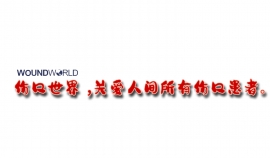
- 星期四, 09 3月 2023
Comparison of the effect of Triticum Vulgare and Hyperici Oleum on healing in traumatic membrane perforation: an animal study
Adem Bora1* , Kasım Durmuş1 , Zeynep D.Şahin İnan2 , Berat Baturay Demirkıran1 and Emine E. Altuntas1
Abstract
Background Traumatic tympanic membrane (TM) perforations usually heal spontaneously. The aim of this study was to investigate whether the topical application of Triticum Vulgare (TV) in experimentally induced traumatic TM perforations in the rats has a positive effect on wound healing process.
Methods The rats were randomly assigned to four experimental groups. Drugs were introduced twice a day for 7 days. On the 7th day, specimens were sent for histological examination.
Results Mean values found in group NC in terms of epithelial regeneration mean scores are as follows: fibroblast and collagen density, neovascularization, and density of inflammation cells were lower than all groups (p<0.05). It was found that reepithelization on the post-perforation 7th day was better in the HO group than the TV group. In terms of the subepithelial fibroblast cells, density of collagen fibers, formation of new veins, and inflammatory cell
accumulation, it was observed that the group TV was better than the group HO.
Conclusion This is the first study investigating the potential curative role of TV in an experimental rat model of tympanic membrane perforation. Considering these findings, it is concluded that TV can be more effective than HO on
wound healing in TM perforation.
Keywords Hyperici oleum, Triticum vulgare, Traumatic tympanic membrane perforation
*Correspondence:
Adem Bora
该Email地址已收到反垃圾邮件插件保护。要显示它您需要在浏览器中启用JavaScript。
1 Department of Otolaryngology, Faculty of Medicine Sivas Cumhuriyet University, 58140 Sivas, Turkey
2 Department of Histology and Embriology, Faculty of Medicine Sivas Cumhuriyet University, 58140 Sivas, Turkey © The Author(s) 2023. Open Access This article is licensed under a Creative Commons Attribution 4.0 International License, which permits use, sharing, adaptation, distribution and reproduction in any medium or format, as long as you give appropriate credit to the original author(s) and the source, provide a link to the Creative Commons licence, and indicate if changes were made. The images or other third party material in this article are included in the article’s Creative Commons licence, unless indicated otherwise in a credit line to the material. If material is not included in the article’s Creative Commons licence and your intended use is not permitted by statutory regulation or exceeds the permitted use, you will need to obtain permission directly from the copyright holder. To view a copy of this licence, visit http://creativecommons.org/licenses/by/4.0/.
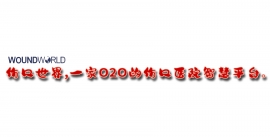
- 星期三, 08 3月 2023
Negative Pressure Wound Therapy for the Prevention of Surgical Site Infections Using Fascia Closure After EVAR—A Randomized Trial
Robert Svensson-Bjo ¨rk1 • Julien Hasselmann1,2 • Giuseppe Asciutto1,3 • Moncef Zarrouk1,2 • Jonas Bjo ¨rk4,5 • Linda Bilos6 • Artai Pirouzram6 • Stefan Acosta1,2 ID
Accepted: 29 August 2022 / Published online: 14 October 2022© The Author(s) 2022
Robert Svensson-Bjo ¨rk 该Email地址已收到反垃圾邮件插件保护。要显示它您需要在浏览器中启用JavaScript。
1 Vascular Diseases Research Unit, Department of Clinical Sciences, Lund University, Ruth Lundskogs gata 10, 205 02 Malmo ¨, Sweden
2 Vascular Center, Skane University Hospital, Malmo ¨, Sweden
3 Department of Vascular Surgery, Uppsala University Hospital, Uppsala, Sweden
4 Division of Occupational and Environmental Medicine, Lund University, Lund, Sweden
5 Clinical Studies Sweden, Lund University, Forum South, Lund, Sweden
6 Vascular Surgery Unit, Department of Cardiothoracic and Vascular Surgery, Linko ¨ping University Hospital, Linko ¨ping, Sweden
Abstract
Background Surgical site infections (SSI) in the groin after vascular surgery are common. The aim of the study was to evaluate the effect of negative pressure wound therapy (NPWT) on SSI incidence when applied on closed inguinal incisions after endovascular aneurysm repair (EVAR).
Methods A multicenter randomized controlled trial (RCT). Between November 2013 and December 2020, 377 incisions (336 bilateral and 41 unilateral) from elective EVAR procedures with the primary intent of fascia closure were randomized and included, receiving either NPWT or a standard dressing. In bilateral incisions, each incision randomly received the opposite dressing of the other side, thereby becoming each other’s control. The primary endpoint was SSI incidence at 90 days postoperatively, analyzed on an intention-to-treat basis. Uni and bilaterally operated incisions were analyzed separately, and their respective p-values combined using Fisher’s method for combining P-values. Study protocol (NCT01913132).
Results The SSI incidence at 90 days postoperatively in bilateral incisions was 1.8% (n = 3/168) in the NPWT and 4.8% (n = 8/168) in the standard dressing group, and in unilateral incisions 13.3% (n = 2/15) and 11.5% (n = 3/26), respectively (combined p = 0.49). In all SSIs, bacteria were isolated from incisional wound cultures. No additional SSIs were diagnosed between 90 days and 1 year follow-up. Conclusions No evidence of difference in SSI incidence was seen in these low-risk inguinal incisions when comparing NPWT with standard dressings after EVAR with the primary intent of fascia closure.
Clinical Trials: NCT01913132.
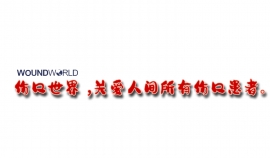
- 星期二, 07 3月 2023
Predictors of sternal wound infection post cardiac surgery in a Saudi Centre: a case control study
Adil A. Isaac*
*Correspondence:
Adil A. Isaac
该Email地址已收到反垃圾邮件插件保护。要显示它您需要在浏览器中启用JavaScript。
Department of Infectious Diseases, Saud Al-Babtain Cardiac Centre
(SBCC), 5443 King Khalid Street, Dammam, Eastern Province, Kingdom
of Saudi Arabia
Abstract
Background Sternal wound infection (SWI) post cardiac surgery remains an important cause of extra morbidity, mortality and cost. The objective was to identify risk factors for SWI in a cardiac centre in Eastern Saudi Arabia as part of the investigation into Surveillance variance in the local rates of SWI.
Methods We included cases and controls from a cross section of patients who underwent major cardiac surgery between 2017 and 2020 matched for age, sex and time of surgery. An explanatory logistic regression model was fitted to estimate the risk factors.
Results N=204 (51 cases and 153 controls matching ratio 1:3, from a source population of 985 patients). factors significantly associated with SWI in the final multivariate model: hospital stay OR (1.05, Cl 1.01–1.10), Graft Conduit BIMA versus No Graft OR (10.94, Cl 1.60–74.63), transfusion of both packed cells plus other blood products versus
no transfusion OR (3.53, Cl 93–13.44), HbA1c OR (1.09 Cl 0.84–1.41), BMI OR (1.25, Cl 1.04–1.50), perioperative blood
glucose OR (1.02, Cl 1.004–1.03), surgery time OR (1.19, Cl 1.00–1.58).
Conclusions The diverse aetiology, cross-disciplinary nature of SWI prevention, and despite improved prevention
and control practices, including related care bundles with their proven value, SWI remain a serious challenge in cardiac surgery. Multidisciplinary consensus guidelines are well overdue.
Keywords Sternal wound infection, Mediastinitis, Sternotomy, Cardiac surgery, Case control, Saudi Arabia
© The Author(s) 2023. Open Access This article is licensed under a Creative Commons Attribution 4.0 International License, which permits use, sharing, adaptation, distribution and reproduction in any medium or format, as long as you give appropriate credit to the original author(s) and the source, provide a link to the Creative Commons licence, and indicate if changes were made. The images or other third party material in this article are included in the article’s Creative Commons licence, unless indicated otherwise in a credit line to the material. If material is not included in the article’s Creative Commons licence and your intended use is not permitted by statutory regulation or exceeds the permitted use, you will need to obtain permission directly from the copyright holder. To view a copy of this licence, visit http://creativecommons.org/licenses/by/4.0/. The Creative Commons Public Domain Dedication waiver (http://creativeco mmons.org/publicdomain/zero/1.0/) applies to the data made available in this article, unless otherwise stated in a credit line to the data.
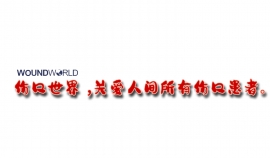
- 星期一, 06 3月 2023
Wound infection in colorectal cancer resections through a laparoscopic approach: a single‑center prospective observational study of over 3000 cases
Atsushi Ikeda1,2 · Yosuke Fukunaga1 · Takashi Akiyoshi1 · Satoshi Nagayama1 · Toshiya Nagasaki1 · Tomohiro Yamaguchi1 · Toshiki Mukai1 · Yukiharu Hiyoshi1 · Tsuyoshi Konishi1,3
Received: 7 January 2021 / Accepted: 27 January 2021 © The Author(s) 2021
Abstract
Objectives This prospective observational study aimed to clarify the incidence and independent risk factors of wound infection after laparoscopic surgery for primary colonic and rectal cancer.
Methods A prospective surveillance of surgical site infection (SSI) was conducted in consecutive patients with primary colorectal cancer, who underwent elective laparoscopic surgery in a single comprehensive cancer center between 2005 and 2014. The outcomes of interest were the incidence and risk factors of wound infection.
Results In total, 3170 patients were enrolled in the study. The overall incidence of wound infection was 3.0%. The incidence of wound infection was significantly higher in rectal surgery than in colonic surgery (4.7 vs. 2.1%, p<0.001). In rectal surgery, independent risk factors for developing wound infection included abdominoperineal resection (p<0.001, odds ratio [OR]=11.4, 95% confidence interval [CI]: 5.04–24.8), body mass index (BMI)≥25 kg/m2 (p=0.041, OR=1.97, 95% CI, 1.03–3.76), and chemoradiotherapy (p=0.032, OR=2.18, 95% CI, 1.07–4.45). In laparoscopic colonic surgery, no significant risk factors were identified.
Conclusions Laparoscopic rectal surgery has a higher risk of wound infection than colonic surgery. Laparoscopic rectal surgery involving abdominoperineal resection, patients with higher BMI, and chemoradiotherapy requires careful observation in wound care and countermeasures against wound infection.
Tsuyoshi Konishi, 该Email地址已收到反垃圾邮件插件保护。要显示它您需要在浏览器中启用JavaScript。 | 1 Department of Gastroenterological Surgery, Cancer Institute Hospital of Japanese
Foundation for Cancer Research, Tokyo, Japan. 2 Department of Surgery, Graduate School of Medicine, Kyoto University, Kyoto, Japan. 3 Department of Surgical Oncology, The University of Texas, M.D. Anderson Cancer Center, 1400 Pressler Street Unit 1484, Houston, TX 77030, USA.
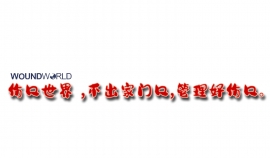
- 星期五, 03 3月 2023
Long‑term analysis of chronic pain associated with lower extremity injuries
Thomas Rauer1 · Eva Friedl1 · Jamison G. Gamble2 · Boris A. Zelle3 · Hans‑Christoph Pape1 · Roman Pfeifer1
Received: 3 August 2022 / Accepted: 22 November 2022 © The Author(s) 2022
Abstract
Introduction The main objective of this study is to examine chronic pain and limping in relation to lower extremity and pelvic fracture location in addition to fracture combinations if multiple fractures are present on the same leg that have not been previously reported. We hypothesize that fracture pattern and location of lower extremity and pelvis fractures of multiple injured patients influence their long-term pain outcome.
Materials and methods Retrospective cohort study. Patients with treated multiple lower limb and pelvic fractures at a level 1 trauma center and followed up for at least 10 years postinjury were assessed. Lower leg pain subdivided into persistent, load-dependent and intermittent pain, as well as limping were recorded by using self-administered patient questionnaires and standardized physical examinations performed by a trauma surgeon. Descriptive statistics were used to present comparative measurements between groups.
Results Fifty-seven percent of patients (n=301) showed chronic lower limb pain 10 years postinjury. Ten percent of all patients with chronic pain displayed persistent pain, and here the most common fracture combination was tibial shaft fractures in combination with femoral shaft or proximal tibial fractures (13%). One hundred fifty-one patients reported load-dependent pain, with the most common fracture combinations being fractures of the foot in combination with femoral shaft fractures or distal tibial fractures (11%). One hundred twenty patients reported intermittent pain, with the most common fracture combinations involving the shaft of the tibia with either the femoral shaft or distal tibia (9%). Two hundred fifteen patients showed a persistent limp, and here the most common fractures were fractures of the femoral shaft (19%), tibial shaft (17%), and pelvis (15%).
Conclusions In multiple injured patients with lower extremity injuries, the combination of fractures and their location are critical factors in long-term outcome. Patients with chronic persistent or load-dependent pain often had underlying femoral shaft fractures in combination with joint fractures.
Keywords Long-term outcome · Lower limb · Multiple injuries · Acetabulum · Chronic pain · Polytrauma
Thomas Rauer
该Email地址已收到反垃圾邮件插件保护。要显示它您需要在浏览器中启用JavaScript。
1 Department of Trauma Surgery, University Hospital Zurich, 8091 Zurich, Switzerland
2 St. George’s University School of Medicine, St. George, Grenada
3 Department of Orthopedics, University of Texas Health Science Center at San Antonio, San Antonio, TX, USA
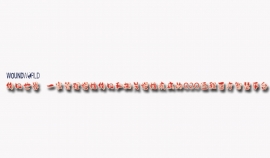
- 星期三, 01 3月 2023
Combined negative pressure wound therapy with irrigation and dwell time and artificial dermis prevents infection and promotes granulation formation in a ruptured giant omphalocele: a case report
Yoichi Nakagawa1 , Hiroo Uchida1* , Akinari Hinoki2 , Chiyoe Shirota1 , Wataru Sumida1 , Satoshi Makita1 , Hizuru Amano1 , Masamune Okamoto1 , Aitaro Takimoto1 , Seiya Ogata1 , Shunya Takada1 , Daiki Kato1 and Yousuke Gohda1
Abstract
Background: Omphalocele is a congenital abdominal wall defect of the umbilical cord insertion site. A giant omphalocele, with a fascial defect>5 cm in diameter and/or containing>50% of the liver within the hernia sac, can be challenging for pediatric surgeons. Recently, negative pressure wound therapy has been reported as an effective management for giant omphaloceles; however, it is not recommended for an infected wound with necrotic tissue as it may exacerbate infection. We adopted negative pressure wound therapy with irrigation and dwell time (NPWTi-d) for a case of a ruptured giant omphalocele. Artificial membranes, followed by artificial dermis, were used to promote fibrous capsule formation, and then NPWTi-d was used to promote granulation while controlling infection. However, studies have not been conducted regarding NPWTi-d for ruptured giant omphaloceles; hence, we present our treatment experience with NPWTi-d for a giant omphalocele.
Case presentation: The patient was a boy born at 38 weeks and 3 days of gestation, weighing 1896 g. He was diagnosed with a ruptured giant omphalocele with a total liver and intestine defect hole of 10 cm × 10 cm. The patient underwent silo placement using an artificial mesh, followed by plicating the artificial mesh at 4 days of age. The herniated viscera were gradually reduced into the abdominal cavity; however, the defect size was still large. Hence, a collagen-based artificial dermis was patched on the defect hole. After creating a fresh and smooth granulated tissue, NPWTi-d was applied at 33 days of age to promote granulation and control infection. We used the 3 M™ V.A.C.® Ulta Therapy Unit with 3 M™ VeraFlo™ therapy. NPWTi-d was stopped at 60 days of age when the granulation tissue was well formed including at the artificial dermis site. The wound was managed with prostandin ointment and appropriate debridement, resulting in complete epithelialization at 5 months of age.
*Correspondence: 该Email地址已收到反垃圾邮件插件保护。要显示它您需要在浏览器中启用JavaScript。
1 Department of Pediatric Surgery, Nagoya University Graduate School of Medicine, 65 Tsurumai-cho, Showa-ku, 466-8550 Nagoya, Aichi, Japan Full list of author information is available at the end of the article
© The Author(s) 2022. Open Access This article is licensed under a Creative Commons Attribution 4.0 International License, which permits use, sharing, adaptation, distribution and reproduction in any medium or format, as long as you give appropriate credit to the original author(s) and the source, provide a link to the Creative Commons licence, and indicate if changes were made. The images or other third party material in this article are included in the article’s Creative Commons licence, unless indicated otherwise in a credit line to the material. If material is not included in the article’s Creative Commons licence and your intended use is not permitted by statutory regulation or exceeds the permitted use, you will need to obtain permission directly from the copyright holder. To view a copy of this licence, visit http://creativecommons.org/licenses/by/4.0/. The Creative Commons Public Domain Dedication waiver (http://creativeco mmons.org/publicdomain/zero/1.0/) applies to the data made available in this article, unless otherwise stated in a credit line to the data.
Conclusions: Artificial membranes followed by artificial dermis were used to promote a fibrous capsule and artificial dermis granulation, which protects against organ damage. NPWTi-d achieved better control of infection and promoted wound healing. NPWTi-d combined with artificial dermis can effectively treat ruptured giant omphaloceles.
Keywords: Negative pressure wound therapy, Negative pressure wound therapy with irrigation and dwell time, Omphalocele
